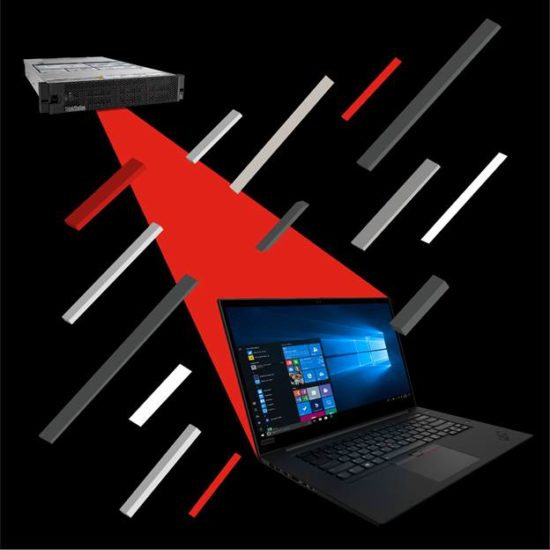Systems with Nvidia’s Grid technology and Quadro graphics can deliver up to 4K graphics performance remotely.

The tech industry is moving online en masse. If the lockdowns go on much longer, that whole transition to the cloud thing will be done by Halloween. However, a major issue for many people who depend on powerful computers at work is that their computers at home cannot handle those tasks. And besides, the kids are using it for homeschooling.
Going on the assumption that this worldwide quarantine is a great time to try out new approaches, Lenovo suggests people try out remote computing via Mechdyne’s TGX software and a suitable host workstation like, say a Lenovo P520 or P920, and maybe a fairly recent Thinkpad or Thinkstation at home.
To back up, Mechdyne is a VAR specializing in visualization technologies. The company made its mark as a provider of CAVE hardware, software, and services and has made a pivot to include desktop immersion technologies, VR/AR/XR and extending immersive experiences through remote computing.
The company introduced its TGX technology in 2017 and since then has lined up a significant roster of technology partners. In addition to Lenovo, Dell is on board, as is Nvidia. The TGX technology supports Nvidia’s Quadro graphics and also the company’s GRID technology for remote computing. Operating system partners include Redhat and Microsoft, and streaming tools and services support comes from NetApp, LeoStream, and AWS. Schlumberger is a partner for oil and gas applications.
Resellers include PCPC, Fujitsu, GeoComputing, Proact, GPL Technologies, Conscia, Exxact, Amulet Hotkey, era, and Technologent.
Mechdyne’s software exploits Nvidia Quadro GPUs using a built-in video encoder which compresses and sends information from the host to the client device which decodes the data. The application files are located on the host computer. Depending on their hardware resources, customers can access graphics at up to 4K resolutions.
The system enables teams to share remote workstation resources and also to collaborate from wherever they are with built-in security and manageability.
Lenovo’s offer allows people who’d like to try out TGX to install the trial on their host hardware that’s set up with all the software applications they use in their work. They will also have to install the receiver software on their client device.
Attentive readers will recognize that this free trial isn’t exactly for everyone since TGX relies on Quadro graphics. The table below lays out Mechdyne’s system requirements.

What do we think?
We may be working at home, but the TGX system isn’t exactly made for the average remote worker. It’s designed for high-performance computing and for certain applications. More often, we’ll be seeing these systems offered in the cloud and offices accessing the software on host systems through their closed network systems or via the cloud depending on their security requirements. Some software companies might have their own ideas about how people can access their products remotely. It might not be enough to have a software license on the host computer; it might be necessary to have a license for every remote user. Software companies are increasingly wanting to know what their customers are doing with their software so they can develop accordingly (or, charge accordingly).
This is not the old Nvidia Grid or VDI stuff. Traditional VDI uses emulated (virtual) CPU/GPU/memory resources. Nvidia’s Grid technology can use a combination of traditional VDI setups but with dedicated access to Nvidia GPU resources (vGPU, dGPU).
Lenovo’s remote workstation solution caters for the high-end power user who’s computing requirement exceed that of many VDI + Grid solutions. It delivers a 1:1 GPU accelerated remote experience. Lenovo says TGX’s Remote Workstation software leverages the Nvidia GPU to both encode and decode the desktop experience, resulting in high-performance, low latency, low bandwidth solution.
Those are all details, of course. Remote computing is becoming a more powerful option with every CPU and GPU evolution.
For more information, see Lenovo’s TGX page and Mechdyne TGX info.





